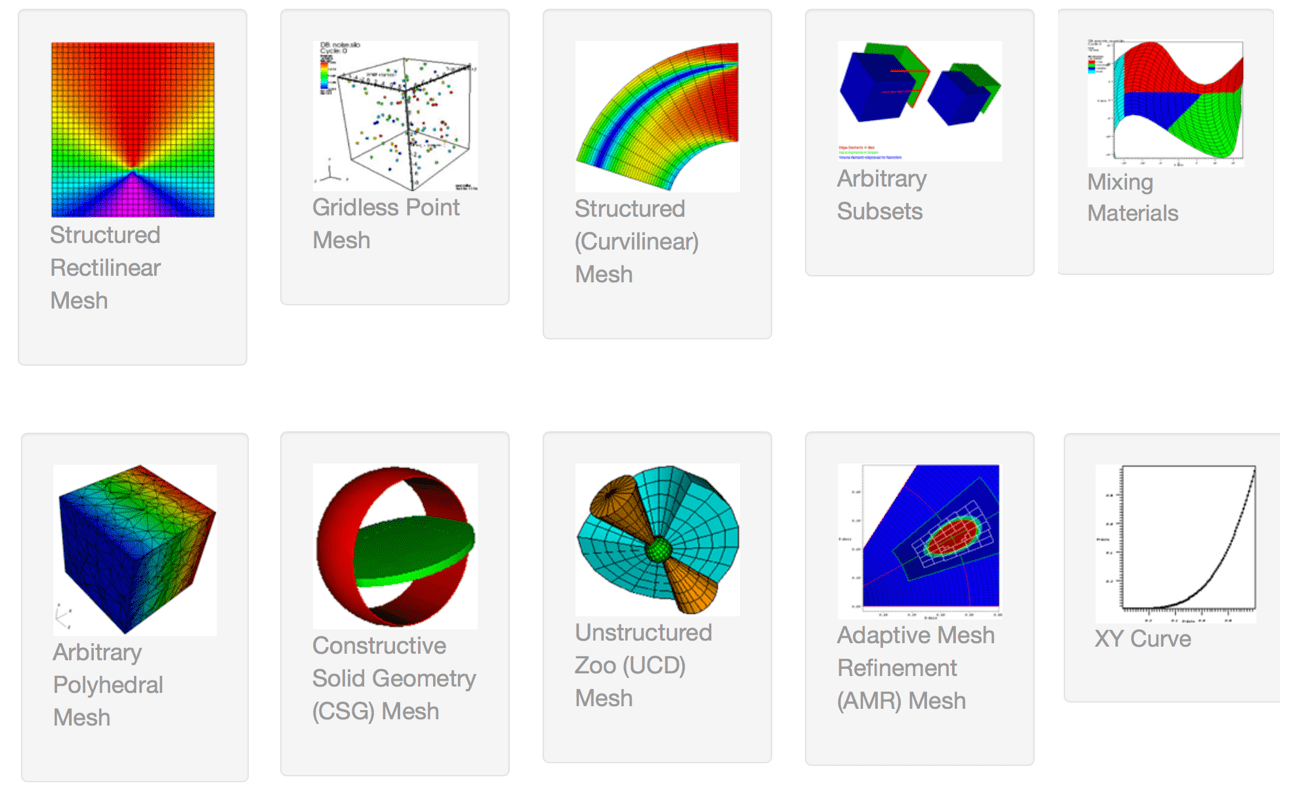Main¶
The design of MACSio is described in more detail in
an accompanying design document. Here, we provide only a high
level overview.
MACSio is divided into two halves; the MACSio main driver and the I/O plugin(s).
The main driver generates the scientific data objects (examples of which are pictured below) typical of HPC, multi-physcis simulation codes. It also orchestrates a number of activities such as compute and/or communication workloads to be mixed with the I/O workload, time and space performance data gathering, event logging and other support operations.

Scientific computing data objects typical of mesh-based multi-physics simulation codes¶
The other half of MACSio is the I/O plugin(s). A MACSio plugin orchestrates marshalling of data between memory and disk. Different plugins exist to implement different I/O proxies. For example, the Silo plugin serves as a proxy for many (not all) LLNL simulation codes. The Exodus plugin serves as proxy for many Sandia simulation codes. On the other hand, instead of representing a proxy for any specific organization or code, the HDF5 plugin serves as a proxy for the best way to use HDF5 for various parallel I/O paradigms. It also provides a number of command-line options to control low-level features of the HDF5 library to help probe the impact of various options on the performance space.
Note
Should extend MACSio to support scripted sequences of dumps
MACSio’s main driver accepts a slew of command-line arguments. If MACSio has been built, you can obtain help for MACSio’s main driver arguments
MACSio’s command-line arguments are designed to give the user control over the nominal I/O request sizes emitted from MPI ranks for mesh bulk data and for amorphous metadata. The user specifies a size, in bytes, for mesh pieces. MACSio then computes a mesh part size, in nodes, necessary to hit this target byte count for double precision data. MACSio will determine an N dimensional logical size of a mesh piece that is a close to equal dimensional as possible. In addition, the user specifies an average number of mesh pieces that will be assigned to each MPI rank. This does not have to be a whole number. When it is a whole number, each MPI rank has the same number of mesh pieces. When it is not, some processors have one more mesh piece than others. This is common of HPC multi-physics applications. Together, the total processor count and average number of mesh pieces per processor gives a total number of mesh pieces that comprise the entire mesh. MACSio then finds an N dimensional arrangement (N=[1,2,3]) of the pieces that is as close to equal dimension as possible. If mesh piece size or total count of pieces wind up being prime numbers, MACSio will only be able to factor these into long, narrow shapes where 2 (or 3) of the dimensions are of size 1. That will make examination of the resulting data using visualization tools like VisIt a little less convenient but is otherwise harmless from the perspective of driving and assessing I/O performance.